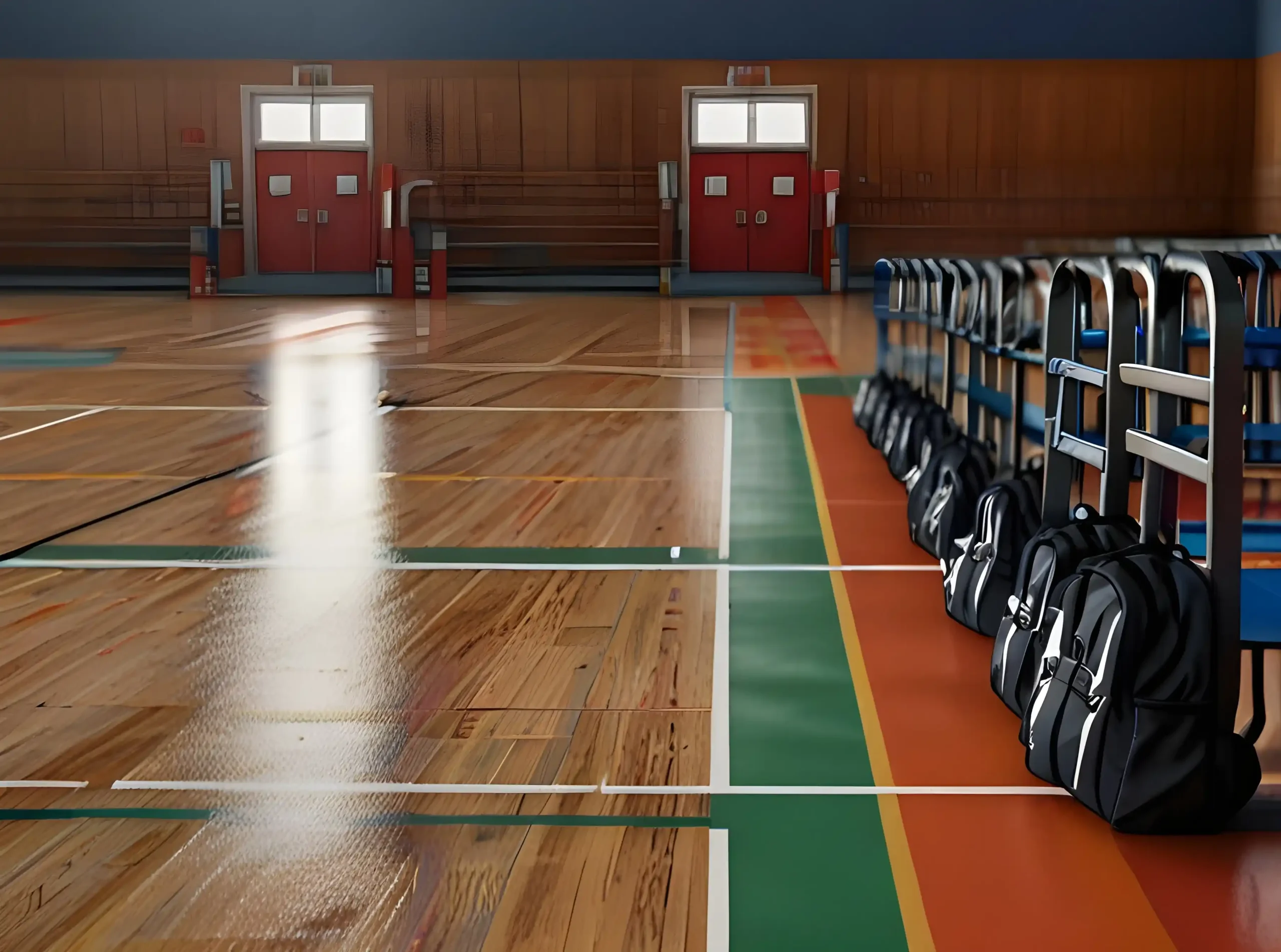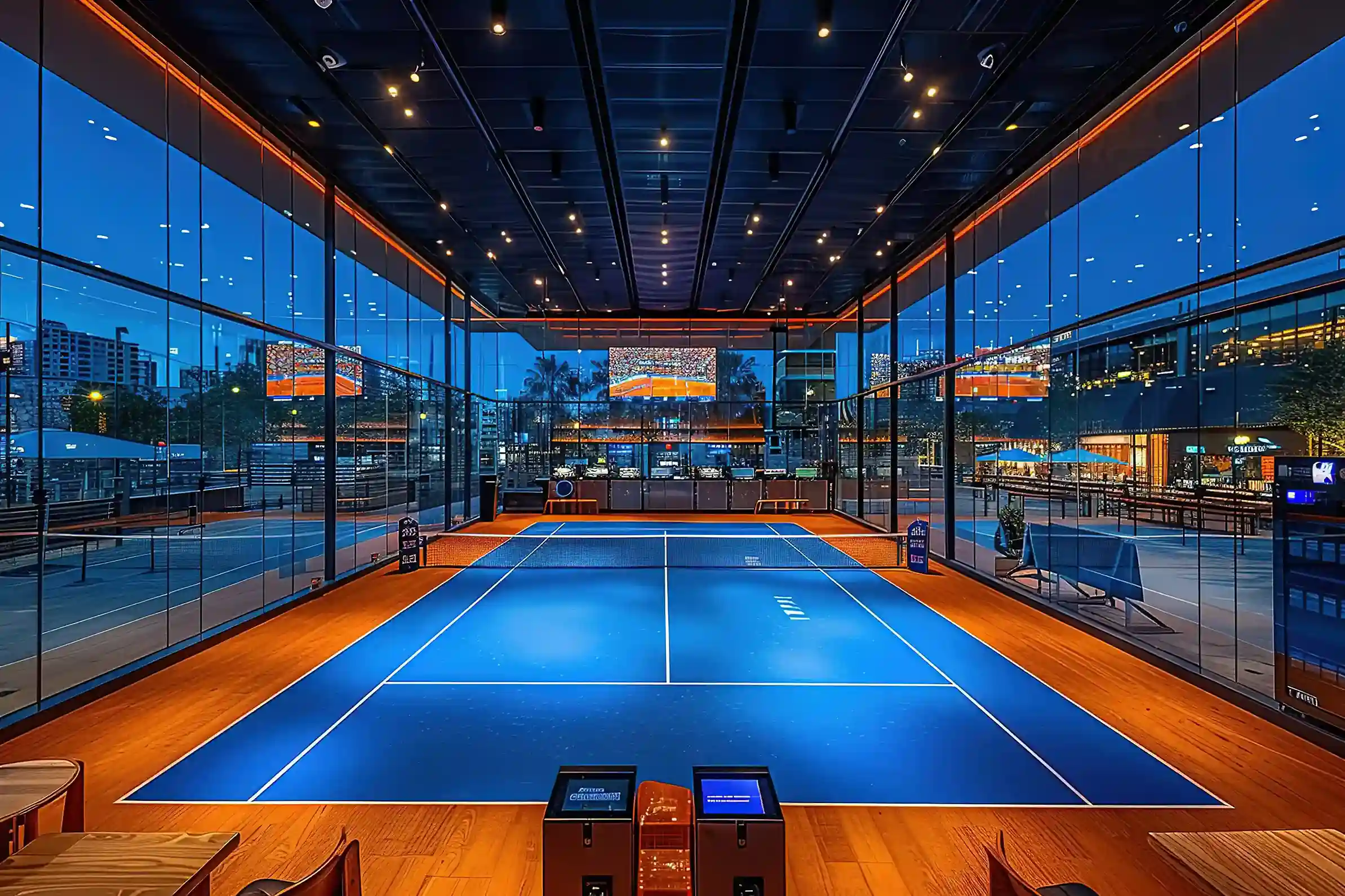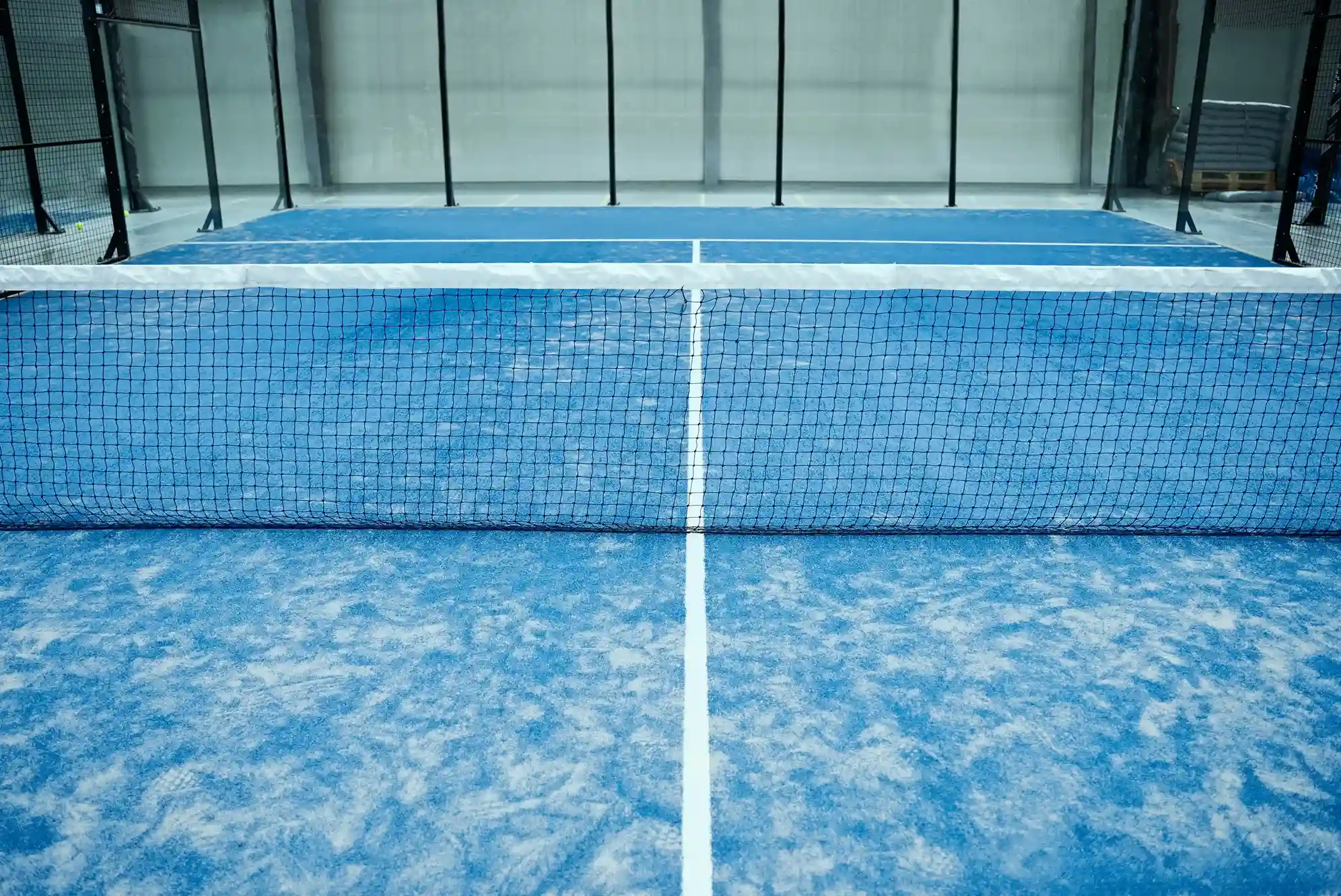When it’s time to build or rebuild a multi-sport complex, the most important decision you’ll make is the floor. The floor that you walk on doesn’t only determine the way the game is played—it determines safety, maintenance, and the number of sports that your building will be able to host.
That’s why so many architects, school planners, and sports facility managers have been asking themselves: Is PVC sports flooring the optimum choice for multi-sport facilities? In this article, we’ll take a closer look at PVC sports flooring, compare it to others, and tell you why it might be the optimum choice for your facility.
Let’s have a look and find out what makes PVC a strong contender.
What is PVC Sports Flooring, and Why is It So Popular?
PVC sports flooring is constructed from polyvinyl chloride, a performance-engineered plastic that’s durable and safe, too. But it’s not the plastic for regular household flooring. Sports PVC is constructed with layer elements such as a wear-resistant surface layer, a cushioned, shock-absorbing middle layer, and a hard bottom layer that resists firmness loss.
Why is this floor trend currently at the top of sports centers’ wish lists worldwide?
One is that PVC sports flooring provides the ideal combination of comfort and resilience. Players can train and play on it without fear of slipping or getting hurt. It’s made to withstand everything from demanding basketball matches to speedy badminton rallies. And it’s made to stand up to repeated use.
But is popularity enough to secure PVC sports flooring as the top pick? Let’s talk about its benefits next.
Key Benefits of PVC Sports Flooring for Multi-Sport Venues
Of all the types of flooring you might have, it’s interesting to know why PVC is unique. PVC sports flooring contains characteristics that go way beyond looks or ease of installation.
Shock Absorption and Injury Prevention
In sports centers, different games necessitate different movements—pivoting, running, jumping, and braking. The cushioned layers in PVC sports flooring absorb these shocks, reducing the risk of injuries like twisted ankles or sore joints. It is especially required in schools or community gyms where the users are of all ages.
Easy Maintenance and Long Life
No one enjoys hours of maintenance or cleaning on a floor. PVC sports floors are low maintenance and simple to clean. Spills, sweat, and scuff marks do not matter—just a quick wipe or mop. And since the top coat is scratch- and stain-proof, it can be left looking like new for years without refinishing.
Versatility Amongst Activities and Sports
One of the most beneficial features of PVC sports flooring is that it can be used for more than one sport on one floor. For basketball, indoor soccer, volleyball, or table tennis, the surface provides a perfect mixture of grip and give. Some systems are even pre-marked with other games’ court lines.
With all these advantages, it is little wonder then that many sports facilities are opting for PVC. But how does it fare when compared to other sport floor coverings?
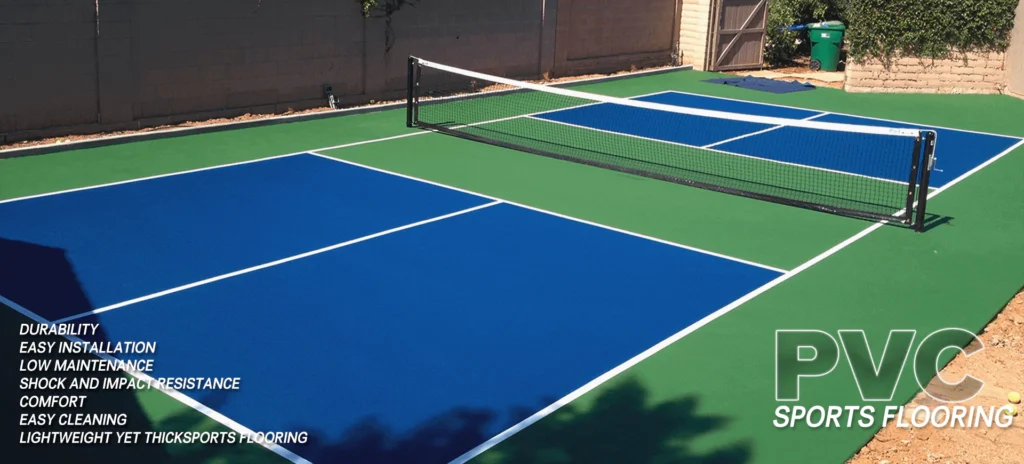

How PVC Sports Flooring Compares to Other Flooring Types
Selecting the right sports floor is a case of looking at more than one sport. A comparison of PVC sports floor to other traditional options: wood, rubber, and polyurethane.
Wood Flooring
Wood is a classic, particularly for basketball. It has good bounce and an old-fashioned appearance. It is very maintenance-intensive, however—sanding, waxing, and strict management of humidity. Wood is also pricey and less suitable for several sports.
Rubber Flooring
Rubber is most commonly located in gymnastics areas or in the gym. It is resistant to wear and tear and possesses excellent shock absorption. It is less than ideal for ball sports like volleyball or badminton. The surface is too soft, and the ball bounce is not consistent.
Polyurethane (PU) Flooring
PU is a poured-in-place flooring system with a high-quality, smooth surface and superior shock resistance. Although it is the ideal flooring for heavy foot traffic, it normally requires longer installation time and special conditions for application.
PVC Sports Flooring
PVC checks many boxes: it’s simple to install, inexpensive, low-maintenance, and highly versatile. It can accommodate a range of sports without the necessity for specialist surfaces. The grip, the bounce, and the safety features are all inherent—making it a great all-rounder for modern facilities.
Then if you require one that is easy to use and provides performance in an even way in terms of activities, PVC sports flooring may be your best option.
But to which sport is it really best suited?
What Sports Are PVC Sports Flooring Suitable For?
It’s multi-sport flooring by nature. One of the strongest features of PVC sports flooring is that it can support a range of games and exercise activities.
The following is a summary of the sports that perform well on this type of surface:
- Basketball – The bounce is regular, and the surface minimizes joint stress.
- Volleyball – The grip allows for quick stops and turns.
- Badminton – Lightweight athletes benefit from the shock-absorbing layer.
- Indoor soccer (futsal) – The smooth surface allows rapid play and control.
- Table tennis – Excellent grip and low glare make it the best for quick games.
- Aerobics & fitness – Cushioning comfort accommodates longer durations of group exercise.
As the floor has been constructed to international sporting specifications, centers don’t have to sacrifice performance for safety. You have both.
So how do you make sure you’re not just choosing PVC—but choosing the right kind of PVC flooring?
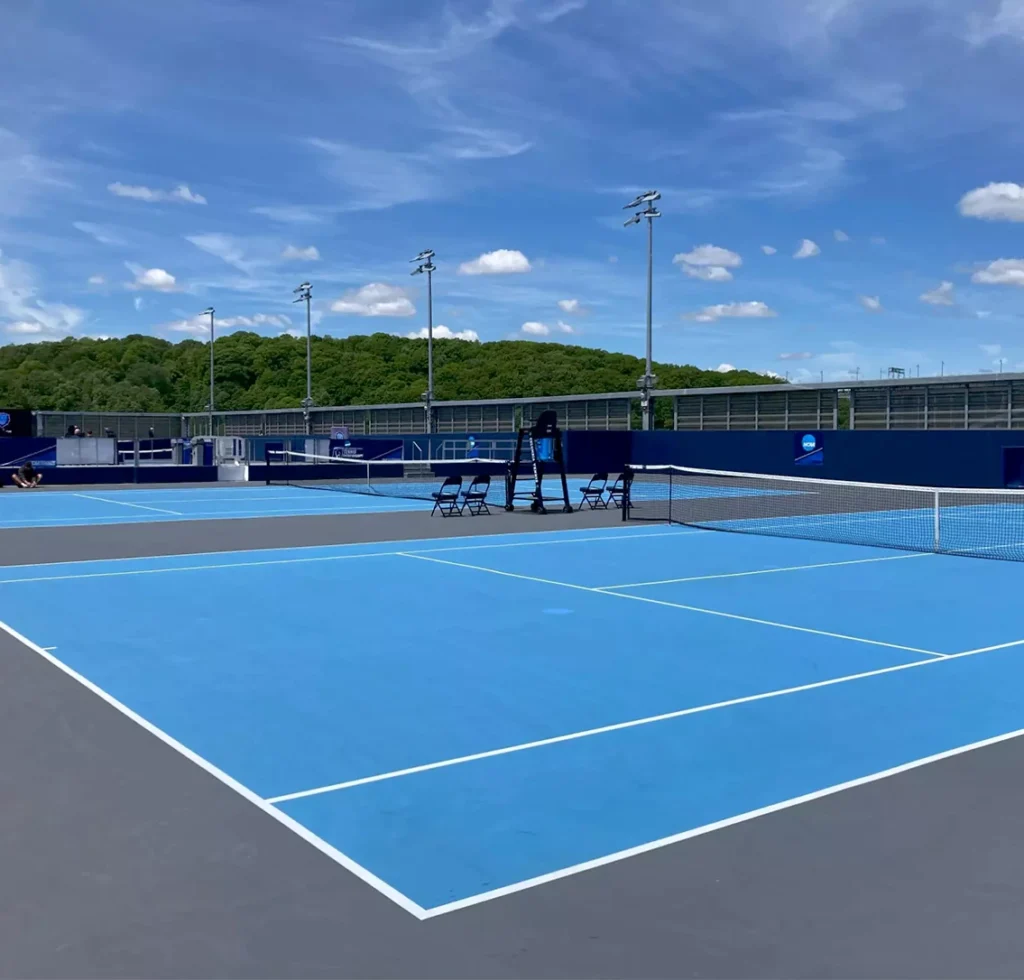

Why VMKON’s PVC Sports Flooring for Your Facility?
Not all PVC sports flooring is the same. The quality of the material, the way it is made, and who installs it is what truly matters. That’s where VMKON Sport differs.
It is this that makes VMKON’s PVC floor a smart investment:
- Certified Performance: VMKON flooring is certified to meet EN14904 international standards for sports flooring. That means it must pass stringent tests for shock absorption, slip resistance, and ball bounce.
- Multi-Layer Build: They are made up of high-density foam comfort material, stability material of fiberglass mesh, and upper wear layers that withstand years of use.
- Custom Designs: Would you like different court colors or lines? VMKON can create to fit your space and your needs.
- Green Materials: The floors are built with recyclable, low-VOC materials that are healthier for indoor air quality.
- Facilities Worldwide recommends: From schools to sports facilities in Asia and the Middle East, VMKON has installed superior systems with excellent customer feedback.
So, if you need PVC sports flooring that is great for performance, safety, and style—VMKON has you covered.
Still not convinced that PVC is the way to go? Let’s recap.
Conclusion
If you have a multi-sport facility, you need flooring that can withstand a little bit of everything—without maintenance or an exorbitant price tag. PVC sports flooring provides durability, comfort, and flexibility in a package that’s hard to beat. It plays nicely with a wide range of sports, protects athletes, and does it all while looking good.
Although there are other floorings that have benefits, PVC is the best-rounded and cost-effective option for the modern multi-sport center.
Are you ready to find out more or get a tailored quote? Let’s talk. Here at VMKON, we’d be happy to walk you through your options, help you design your facility, and provide you with the PVC flooring solution that’s just right for your sports center.
Let’s get in touch today and create something amazing together.
Frequently Asked Questions on PVC Sports Flooring
1. What is PVC sports flooring?
PVC sports flooring is an artificial multi-layered surface made up of polyvinyl chloride, and it is designed for athletic performance, durability, and safety for indoor sports facilities.
2. Is PVC sports surface multi-sport use appropriate?
Yes, it is ideal for multi-sport buildings because it can support many games like basketball, volleyball, badminton, and indoor soccer.
3. How long does PVC sports flooring last?
If well maintained, top-grade PVC sports flooring lasts 10–15 years or longer, depending upon use and maintenance.
4. Is it simple to maintain PVC flooring?
Yes, it is easy to maintain. Regular sweeping and occasional mopping should be enough to maintain it.
5. Will PVC sports flooring accommodate heavy bleachers or equipment?
Yes, commercially available PVC gym flooring is designed to withstand dents and pressure from gym equipment, chairs, and light bleachers.
6. Is PVC flooring safe for athletes?
Yes. It offers slip resistance and shock absorption to reduce the risks of injury when playing.
7. How is PVC distinct from wood sports flooring?
PVC is less expensive, easier to fit, and has lower maintenance, but it delivers improved performance for a range of sports.
8. Is PVC sports flooring eco-friendly?
Much modern PVC flooring, like VMKON, is built from recyclable and low-VOC content for better indoor air quality.
9. Are court lines on PVC sports floors customizable?
Yes, court lines can be customized to your needs at the time of production or retrofitted after installation.
10. How can I get a quotation for VMKON’s PVC sports flooring?
You can reach VMKON directly through their website or speak with their sales representative for a free consultation and quote.


